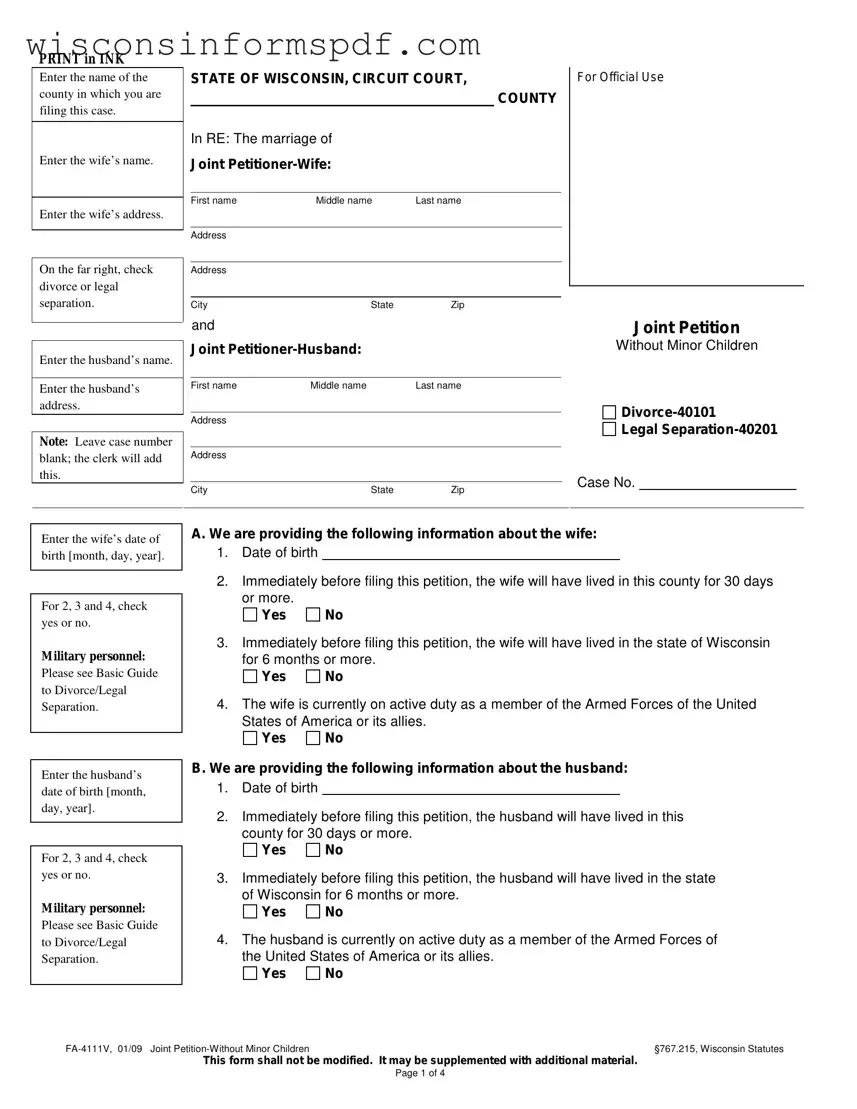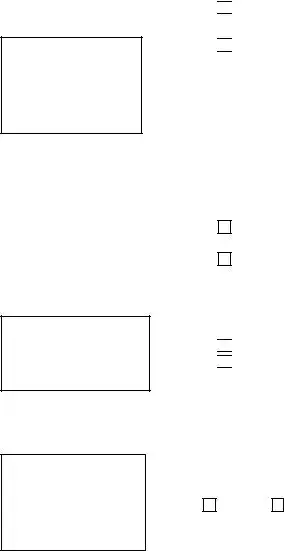The Wisconsin Form FA-4111, pertaining to a Joint Petition for Divorce Without Minor Children, shares similarities with the Petition for Dissolution of Marriage forms used in various states. These forms are fundamentally alike in that they initiate the legal process of divorce, requiring information about both spouses (names, addresses, and birthdates), the marriage (date and location), and residency requirements to establish jurisdiction. Additionally, both forms typically inquire about previous marriages and the presence of children, even though, in the case of FA-4111, the focus is on marriages without minor children.
The Uniform Child Custody Jurisdiction and Enforcement Act (UCCJEA) Affidavit is another document that parallels the Wisconsin FA-4111 form in specific aspects. This affidavit is mandatory in child custody cases across the United States to prevent interstate child custody conflicts. While FA-4111 does not deal with minor children in the marriage being dissolved, both documents require detailed information about the children's residence history and current status, albeit the UCCJEA Affidavit does this to establish jurisdiction over child custody matters specifically.
Financial Disclosure Statements, commonly required in divorce proceedings, also share attributes with the FA-4111 form. While the FA-4111 form captures general information about the marriage and the spouses seeking a divorce without minor children, Financial Disclosure Statements demand detailed disclosures of income, expenses, assets, and liabilities. Both forms are integral to the divorce process, ensuring fair division of marital assets and, when relevant, proper calculation of maintenance (alimony).
The Marital Settlement Agreement, a document often filed with the court when divorcing parties reach a consensus on the division of assets, custody, and other matters, parallels the FA-4111 form in its objective to finalize the terms of the divorce. The FA-4111 form can include attachments that document agreements between the parties (such as maintenance), mirroring the comprehensive settlements outlined in a Marital Settlement Agreement.
Declaration Under Uniform Child Custody Jurisdiction and Enforcement Act (UCCJEA) forms likewise share similarities with parts of the Wisconsin FA-4111 form, particularly regarding the stipulation that parties provide information about any previous marriage's offsprings. The FA-4111 form, though focused on couples without minor children, requires disclosure of any adult children, underlining the importance of clarity in familial relationships in legal documentation.
Change of Venue forms used in legal proceedings to request the transfer of a case to another jurisdiction have procedural similarities with the FA-4111 form. Specifically, both types of documents necessitate accurate and comprehensive personal information to establish or transfer jurisdiction, ensuring the case is heard in the appropriate venue based on residency or other legal requirements.
Domestic Relations Summons forms, which officially notify the other spouse of the initiation of divorce proceedings, share the FA-4111's foundational role in the divorce process. Both documents are essential in moving a divorce forward within the legal system, with the summons formally marking the beginning of the case and the FA-4111 detailing the petitioners' shared requests for the dissolution of marriage.
Lastly, the Preliminary Injunction forms typically filed in divorce cases to prevent either party from asset dissipation, harassment, or other harmful actions during the process. These forms complement the protective intentions behind the FA-4111's included warnings against such behaviors, underscoring the legal system's role in safeguarding individuals and their property during the transitional period of divorse.








 Yes
Yes







 No children were born to or adopted together by us before or during our
No children were born to or adopted together by us before or during our
 All children, who are currently age 18 or older, born to the wife during the marriage include:
All children, who are currently age 18 or older, born to the wife during the marriage include:


 No
No